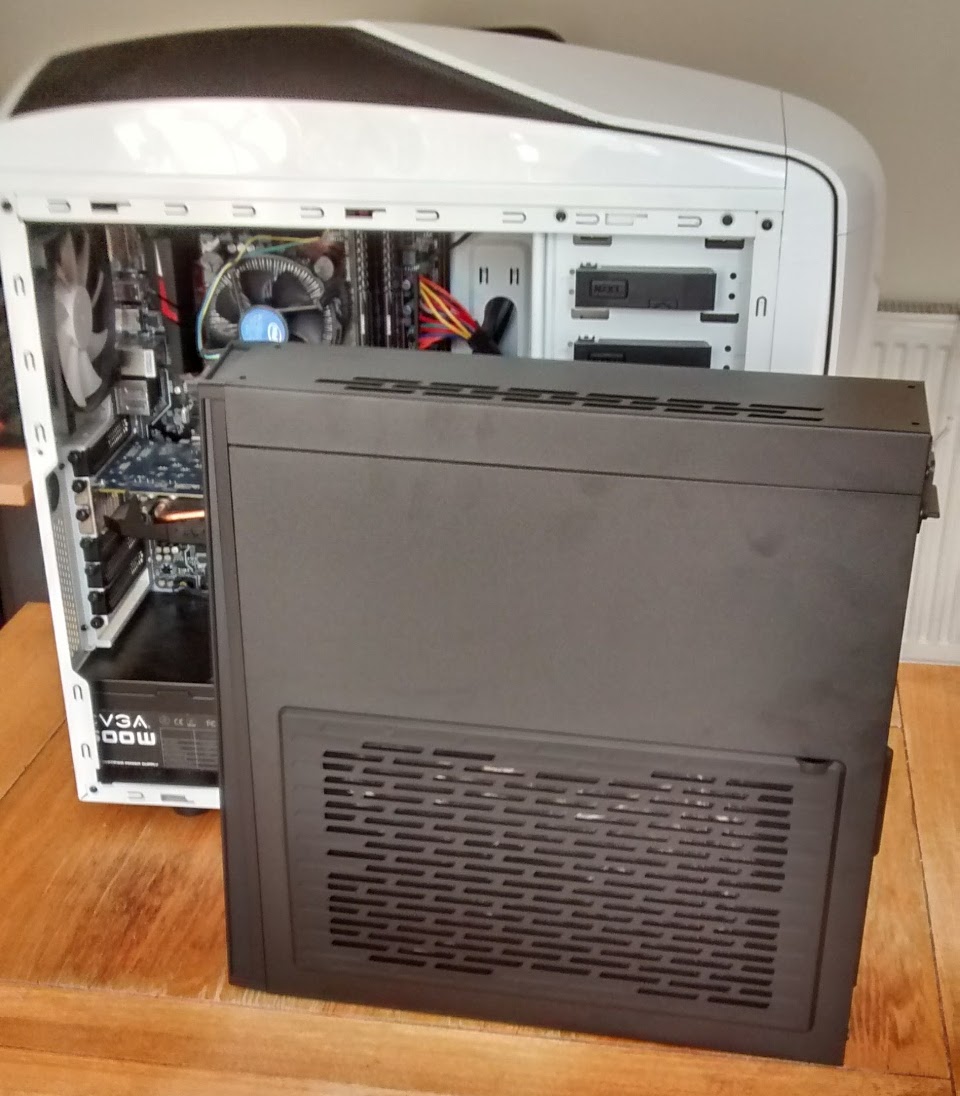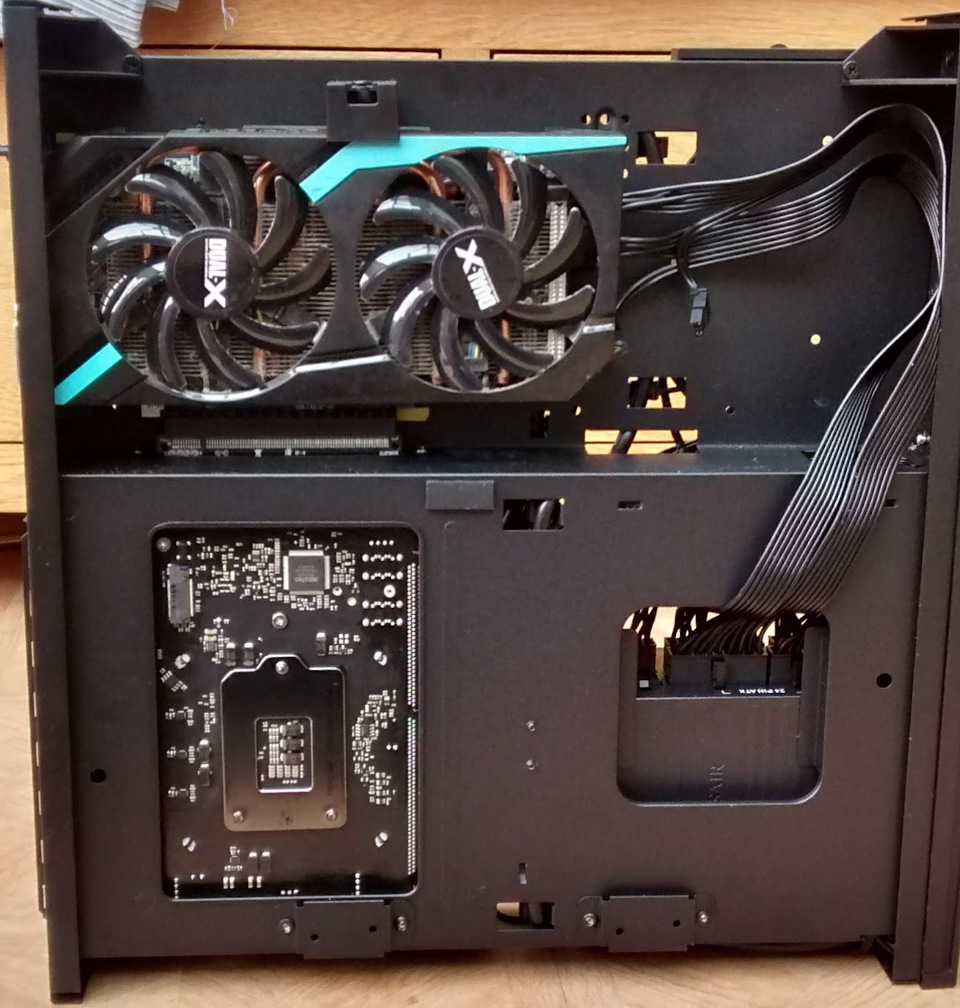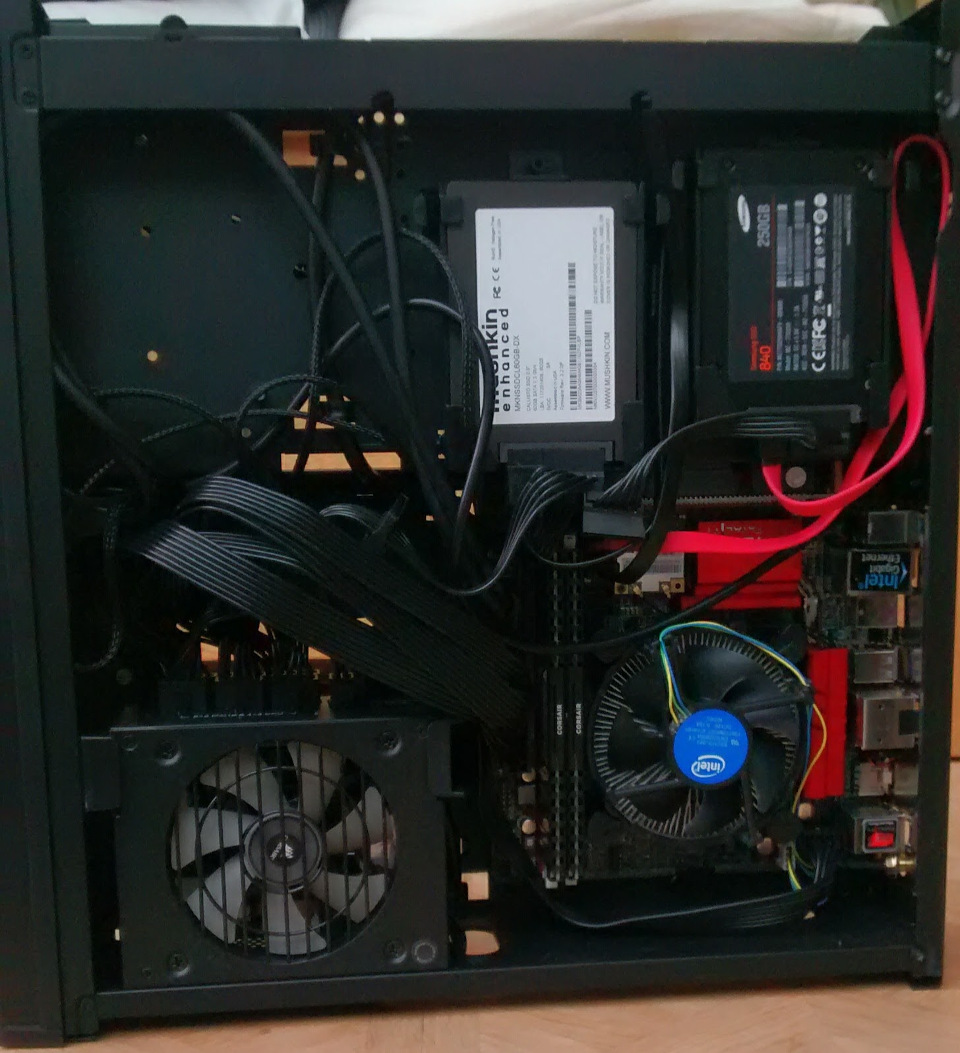Olivia build log
I suppose a build log for my multiple upgrades that were done to my PC deserves a blog post, so here it is.
Starting point
I obviously wanted to make this upgrade as cheap as possible while facilitating my move to a more mobile system, so as small as the ultra-smalls are I can’t really budget over £200 on a case. I settled on the DVR-like shape of the SilverStone RVZ-02 (non windowed version), initially from Amazon Warehouse but this was missing all of it’s fixtures and must importantly the riser card to place the GPU parallel to the motherboard so I purchased a new one. I wanted a reasonable but cheap mITX board to go with my i5-6400 and eventually settled on the AsRock Z170 Fatal1ty (although with hindsight I wouldn’t recommend this board for other Linux users after good Secure Boot support). The power supply for the RVZ-02 is a space saving SFX form factor, so my stop-gap EVGA 600w white PSU was replaced by the Corsair SF450 (80+ Gold rated, from Amazon Warehouse).
Build process
The build was surprisingly easy, considering the substantial lack of volume in the case,
although getting the side panels to line up and slot in is very fiddley and has a slightly
crazy amount of normal plus head screws to get everything in place. For the time being I used
my trusty Sapphire HD7870 1GHz edition, but the blower style fan coupled with the sheer age of
that card meant that it ran at the sound or a tornado while staying ~80C in game. This more than
justified not upgrading from the stock Intel heatsink, since the GPU was clearly the loudest
item in the machine. There are some potato quality pictures below (I was on a backup phone at
the time).



Later upgrades
At this point in the chronology of this machine, the storage is provided by a 60GB Mishkin Chronos I had lying around holding my Arch Linux install and a 250GB Samsung 850 Pro holding my Windows 10 install. As anyone who’s ever tried to run a modern system on such small drives would know, 60GB is barely enough for the OS, web browsers and the installs of PhpStorm and PyCharm I had available, so something had to be done. There were a couple of solutions (since the RVZ-02 has 2 2.5" drive bays and a slim optical drive bay) but I opted for swapping the 60GB SSD for a 1TB data drive I found in the office (probably from a laptop upgrade at some point) and a 250GB NVMe Samsung drive. Since I was already buying extra storage and GPU prices aren’t going down any time soon, I also purchased an ASUS GTX 1060 6GB Turbo (with blower-style cooler). Having only installed an M.2 form factor drive once before, the size of a 2280 still amazes me, and they are so much easier to make good looking than standard 2.5" drives (since cables aren’t needed).
Software, and the current state of things
Since I was switching from AMD to nVidia and had recently done a motherboard upgrade, I felt like it was time to reshuffle my installs around. I wiped all of my drives, then went to install Windows 10. I did have to make a new Windows 10 install USB since the version I’d been carrying was to old to contain the generic NVMe drivers so I was prompted for driver files before installation, but once I had a new USB image the install processed at rocket speed (I was probably looking at a freshly installed desktop at aound 15 minutes). Since the Windows installer doesn’t label drives too descriptively, I had managed to guess which “Unformatted 232.2GB Volume” was the NVMe Drive. I then went on to install Fedora 27 to the 850 Pro. This took a couple of reinstalls due to some Nvidia driver fuckery (some of which is still not resolved, if I cold boot to Fedora a graphics lag like a sloth, but booting after booting Windows gives perfectly normal performance) compounded by Secure Boot (if I’m reinstalling everything, I’m going to do it right and as securely as possible and in my view having Ubuntu recommend disabling secure boot for the proprietary graphics driver support is unacceptably stupid) and UEFI shell issues on AsRock boards (shim and MOKManager don’t update the screen when keys are pressed, meaning I can’t select a key to enrol and sign the driver with).
Clearly, the system still needs work doing to it but for the moment it runs well enough for me, although if anyone wants to try and help resolve these outstanding issues they are more than welcome.
